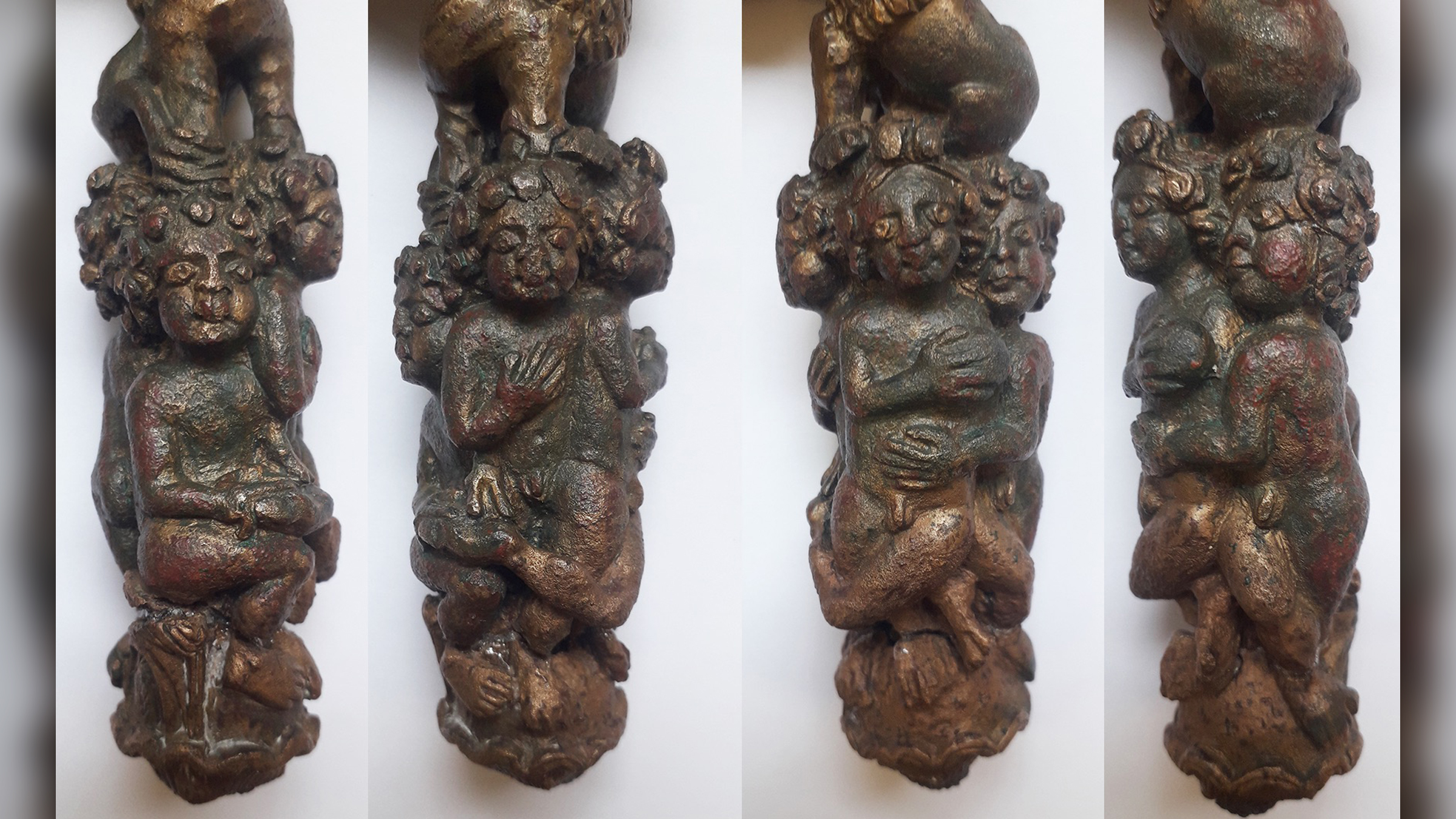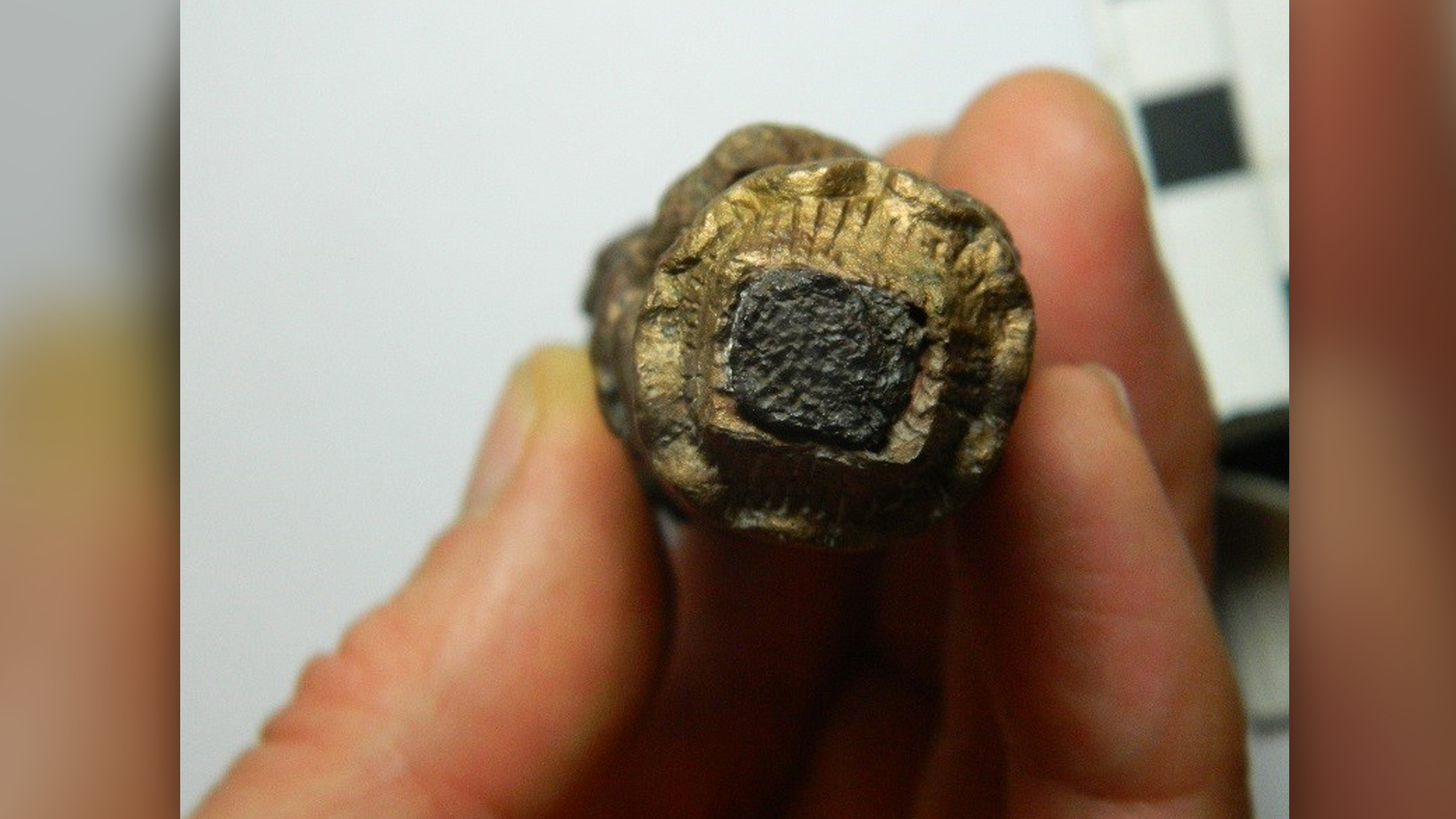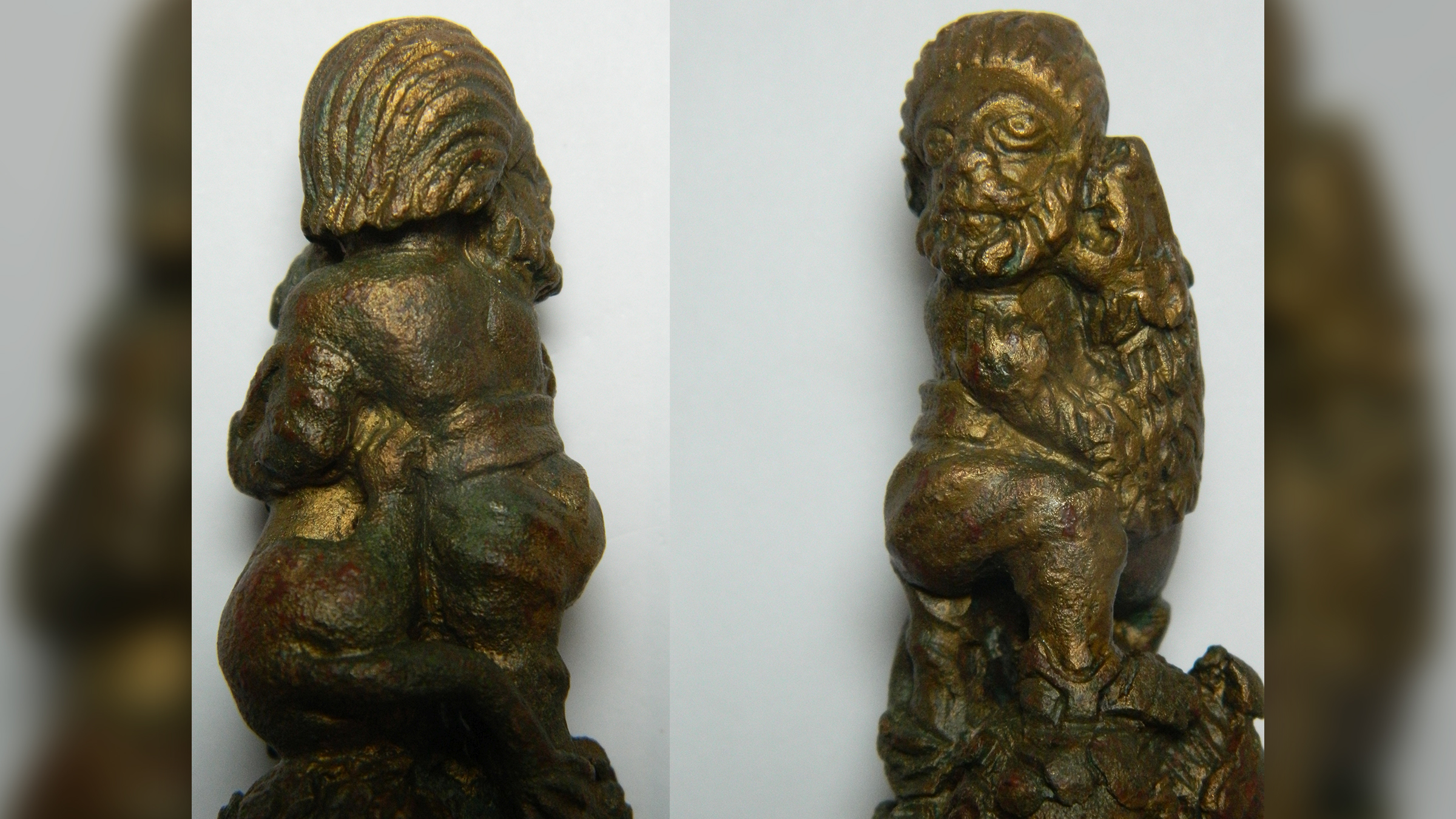Ancient Roman key shows lion devouring barbarian
The lion is about to sink its teeth into the barbarian's head.
Archaeologists in the United Kingdom have discovered an ancient Roman key handle that depicts a grisly scene — a lion devouring a shaggy-haired barbarian, while four spooked cupid-like youths look on, likely awaiting the same fate, a new study reports.
The macabre bronze handle may have mirrored a real-life event, meaning it was likely "created to mark a significant occasion, an episode in which captives [were] killed in the arena by lions," study first author John Pearce, a senior lecturer of archaeology at King's College London, told Live Science in an email.
The expertly crafted figurine depicted on the handle is "best interpreted as a scene of damnatio ad bestias," a Latin phrase that describes the "killing of captives and criminals as punishment and spectacle," the researchers wrote in the study.
Related: In images: Skulls of Roman gladiators and war captives
Archaeologists found the key handle during an excavation in Leicester, England, in 2017, ahead of the construction of new hotels and shops at Grand Central Street, according to a video from the University of Leicester Archaeological Services. The team unearthed it under the floor of a large town house, which was built in the late second century, more than a century after the Romans invaded Britain in A.D. 43.
"As the first discovery of this kind, it illuminates the brutal character of Roman authority in this province" of Roman Britain, Pearce said in a statement. He and his colleagues spent the past few years cleaning and analyzing the key handle, publishing their findings online Aug. 9 in the journal Britannia.
The key was cut off the handle long ago (images of other Roman-era keys are shown here), but the nearly 5-inch-long (12 centimeters) handle gave archaeologists plenty to analyze. It weighs 11 ounces (304 grams) and captures the moment the lion sinks its teeth into the barbarian's head. Many Romans held contempt for and even feared tribes outside the Roman Empire; they called these people barbarians, viewing them as "other" and "enemies of civilization," the researchers wrote in the study. So, it's no surprise that the barbarian's wildness is accentuated in the figurine, with mane-like hair, a thick beard, bulging eyes and possibly a naked chest.
Get the world’s most fascinating discoveries delivered straight to your inbox.
Below the brutal attack scene, four naked youths huddle together, with the two slightly older children holding the younger ones. Like the adult barbarian, the kids are depicted with wide-eyed expressions, with "large eyeballs projecting from their sockets and pupils indented, prominent brows, broad noses, closed mouths with pursed lips and full cheeks," the researchers wrote in the study.
The youngsters likely represent the barbarian tribe's children, whose imminent demise reveals what happened when barbarians opposed Roman rule, the researchers said.

Meanwhile, the lion on the key handle likely symbolized security and protection for the household.
"As the key connects to the entrance of the house, it is also associated with a point of vulnerability," Pearce told Live Science. To the Romans, the image of the lion was seen as "warding off malign influence and the evil eye from the spaces of the living and the dead." The superstitious belief explains why lion motifs sometimes decorate Roman furniture, as well as tomb markers and sarcophagi, he said.


Thrown to the lions?
Given the key handle's extreme detail, is it possible that people in Roman Britain threw captives to the lions? It's hard to say, but evidence suggests it's possible, Pearce said.
For starters, the artifact's style indicates that it was made locally, he said. "It is also not a standard genre scene of the type seen elsewhere in Roman art, so we suggest it marks a specific event, perhaps one seen in the province," Pearce said.
Additionally, Roman Britain had many amphitheaters and theaters where captured lions could have attacked prisoners. And while typical spectacles likely involved local animals, such as bulls, bears and stags, larger spectacles may have involved imported exotic animals, such as lions, which would have "lived long in the memory," and perhaps inspired artwork, such as this key handle, he said.
There is other evidence of lions in Roman Britain. In Roman Yorkshire, a mosaic features several exotic animals, including a lion. In Roman York, a male skeleton was found with puncture wounds in its pelvis from an animal bite, but it's unclear whether a lion left them, Pearce said.
Originally published on Live Science.

Laura is the managing editor at Live Science. She also runs the archaeology section and the Life's Little Mysteries series. Her work has appeared in The New York Times, Scholastic, Popular Science and Spectrum, a site on autism research. She has won multiple awards from the Society of Professional Journalists and the Washington Newspaper Publishers Association for her reporting at a weekly newspaper near Seattle. Laura holds a bachelor's degree in English literature and psychology from Washington University in St. Louis and a master's degree in science writing from NYU.




